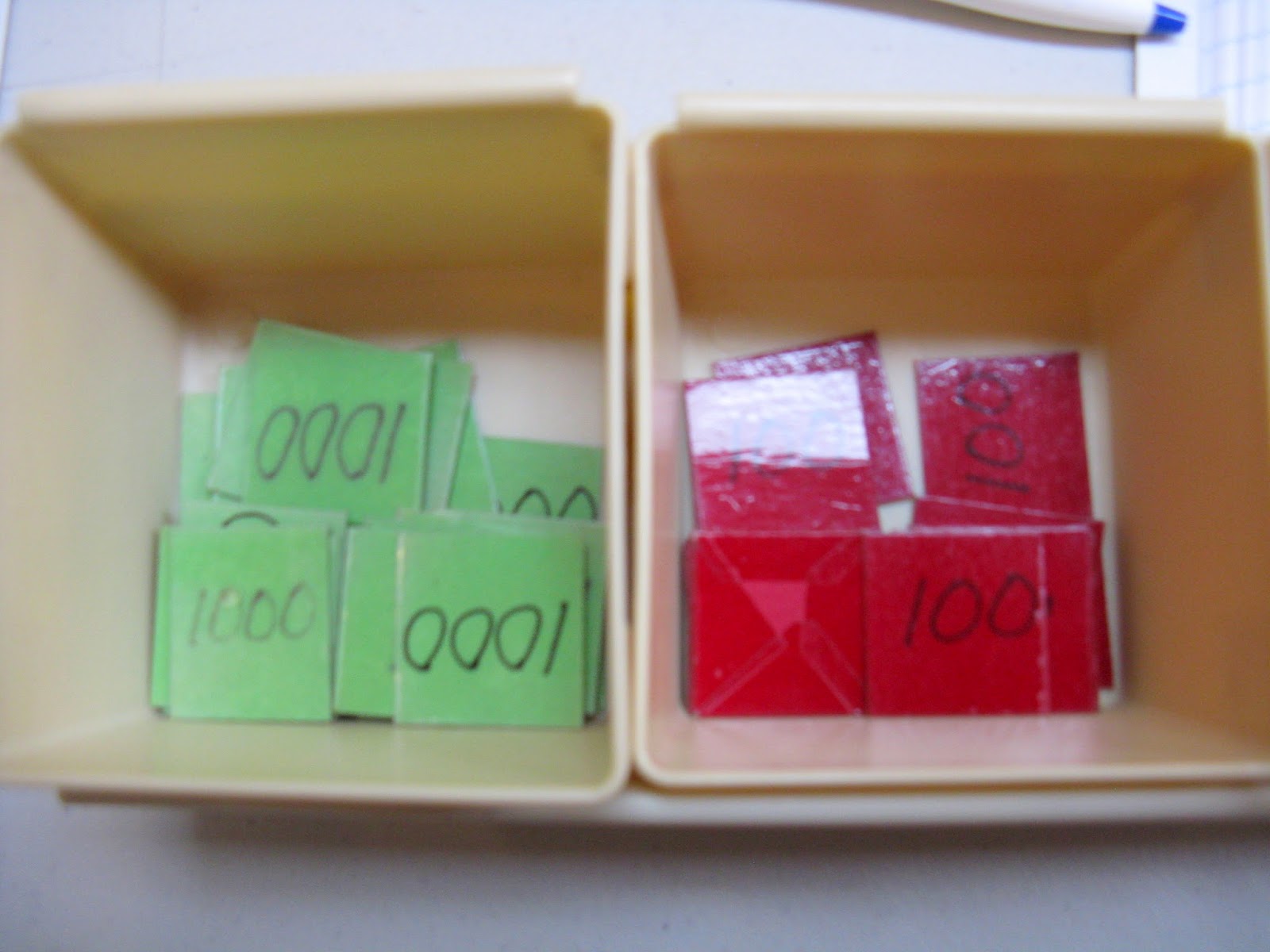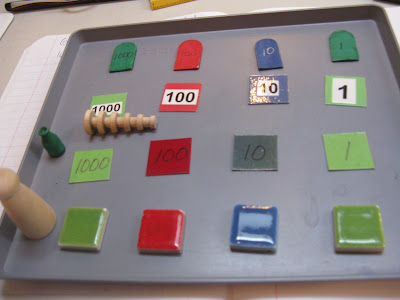The Division Board is similar to the Multiplication Peg Board, but it only goes to 9 on the top.
The top number is the divisor -the skittles at the top represent children with trays (as in division group games.)
Pegs, counted into the lid first and divided on the board, will be the dividend.
The quotient is on the left.
The problem below is 12÷ 6=2. (If twelve pegs are divided among 6 children, they will each get two.)
The top number is the divisor -the skittles at the top represent children with trays (as in division group games.)
Pegs, counted into the lid first and divided on the board, will be the dividend.
The quotient is on the left.
The problem below is 12÷ 6=2. (If twelve pegs are divided among 6 children, they will each get two.)
 |
| Versions of the Division Board |












